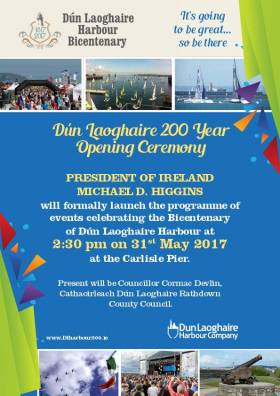Displaying items by tag: Bicentenary
Waterways Ireland Archive Exhibition in Mullingar Celebrates 200 Years of the Royal Canal
#RoyalCanal - A forthcoming exhibition in Mullingar Library will celebrate 200 years of the Royal Canal through images and drawings from the Waterways Ireland archive.
Featuring a selection of images from the archive and from the Ruth Delany and Ian Bath Collections, the exhibition reveals the fascinating history of the Royal Canal over the past 200 years.
The photographs on display are a snapshot of the long history of the inland waterway but they are also testament to the work and efforts of individuals like Ruth Delany and Ian Bath to personally document its deterioration from the 1970s onwards and to highlight an awareness of the canal during the years of lobbying for support for its restoration.
The exhibition will be on display in Mullingar Library from next Monday 27 November to Friday 8 December during library opening hours:
Monday 10am to 5:30pm
Tuesday 10am to 8pm
Wednesday 11am to 5.30pm
Thursday 10am to 8pm
Friday 10am to 5pm
Saturday 10am to 1.30pm
#DLHarbour - Here’s a reminder for your calendar that President Michael D Higgins will officiate the opening ceremony of Dun Laoghaire Harbour’s bicentenary celebration.
President Higgins will formally launch the programme of events celebrating the harbour’s 200 years — which includes July’s Volvo Dun Laoghaire Regatta — from 2.30pm this Wednesday 31 May at Carlisle Pier.
The commemoration will be followed at 3pm by a 21-gun salute from the East Battery as well as a fly-past by two Air Corps aircraft from the direction of Killiney Hill, as previously reported on Afloat.ie.
Royal Canal Bicentenary Celebration This Summer
#RoyalCanal - Dun Laoghaire Harbour isn’t the only aquatic attraction in Ireland celebrating a bicentenary this year, as the Royal Canal’s 200th anniversary also takes place this summer.
Waterways Ireland, in association with the Royal Canal Amenity Group, will shortly announce an events programme marking two centuries since the opening of the inland waterway to the Shannon, with festivities set to begin from 27 May.
#dlharbour200 - To mark the 200th anniversary of Dun Laoghaire Harbour (formerly Kingstown) a summer of celebrations have been organised. The Dun Laoghaire Harbour Bicentenary Steering Group has announced its programme of activities to coincide with the milestone event.
The Opening Ceremony will be officiated by President Michael D Higgins & the groups Patron Minister Mary Mitchell O Connor on 31st May. Other featured events include an International Harbour Food Festival featuring over 25 unique vendors (4th & 5th June), The Kingstown 200 Classic Boat Race (8th July) and a live Viking Invasion re-enactment with longboats as seen on the hit TV Show ‘Vikings’ (20th August).
100,000 visitors are expected to visit the harbour this summer to participate in the free public events. The Dun Laoghaire Harbour Company in collaboration with a range of local stakeholders have put in place a schedule of exhibitions, workshops, lectures and events to mark the Bicentenary. For further information visit www.dlharbour200.ie
Gerry Dunne, CEO of Dun Laoghaire Harbour Company: said “the programme of events throughout the summer reflects the cultural and historical role the harbour has played not just in Dun Laoghaire but in its wider environs over the past 200 years”. Thanking all those who worked tirelessly on the project, Mr Dunne said “the Bicentenary will bring a welcome boost to the local economy and reinforce the sense of public pride in one of the country’s greatest landmarks”.
Kingstown 200 Lecture: The History of Dun Laoghaire Harbour
#Kingstown200 - In this bicentenary year of the founding of Kingstown Harbour, a lecture “The History of Dun Laoghaire Harbour” is to take place this Wednesday, 22 March in the south Dublin Bay town.
In what is expected to be a fascinating talk organised by the Dun Laoghaire Borough Historical Society is to commemorate the harbour over the past two hundred years 1817- 2017. The foundation stone having been laid by King George IV in what was then to become the world’s largest artificial built harbour hewn out of Dalkey granite.
The talk to be presented by maritime expert Cormac Lowth, is to be held in the appropriate venue of the Royal Marine Hotel. The venue dating to the later Victorian period is located off Marine Road is where the talk will take place beginning at 8pm. Admission to non-members is €3.
To mark the occasion of the commemorative lecture, a special journal has been published by the Society to celebrate the harbour’s 200th. The journal booklet titled “A Safe Anchorage Dun Laoghaire/Kingstown Harbour 1817-2017” will be launched at the lecture and available at a price of €8.00.
In addition copies of the booklet that has a front cover depicting the iconic ‘Mail-Boats’ alongside Carlisle Pier, will be stocked in the nearby Eason's bookstore on Marine Road.
Alternatively, you can order from the Society’s secretary Anna Scudds, for details Tel 280 6213



























































